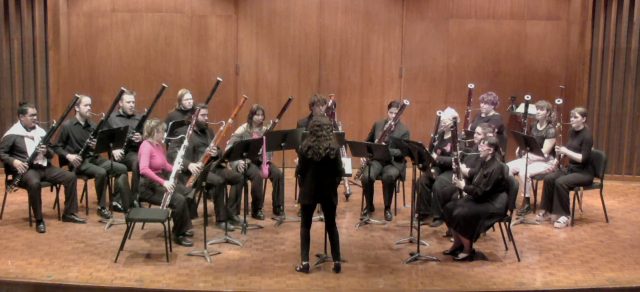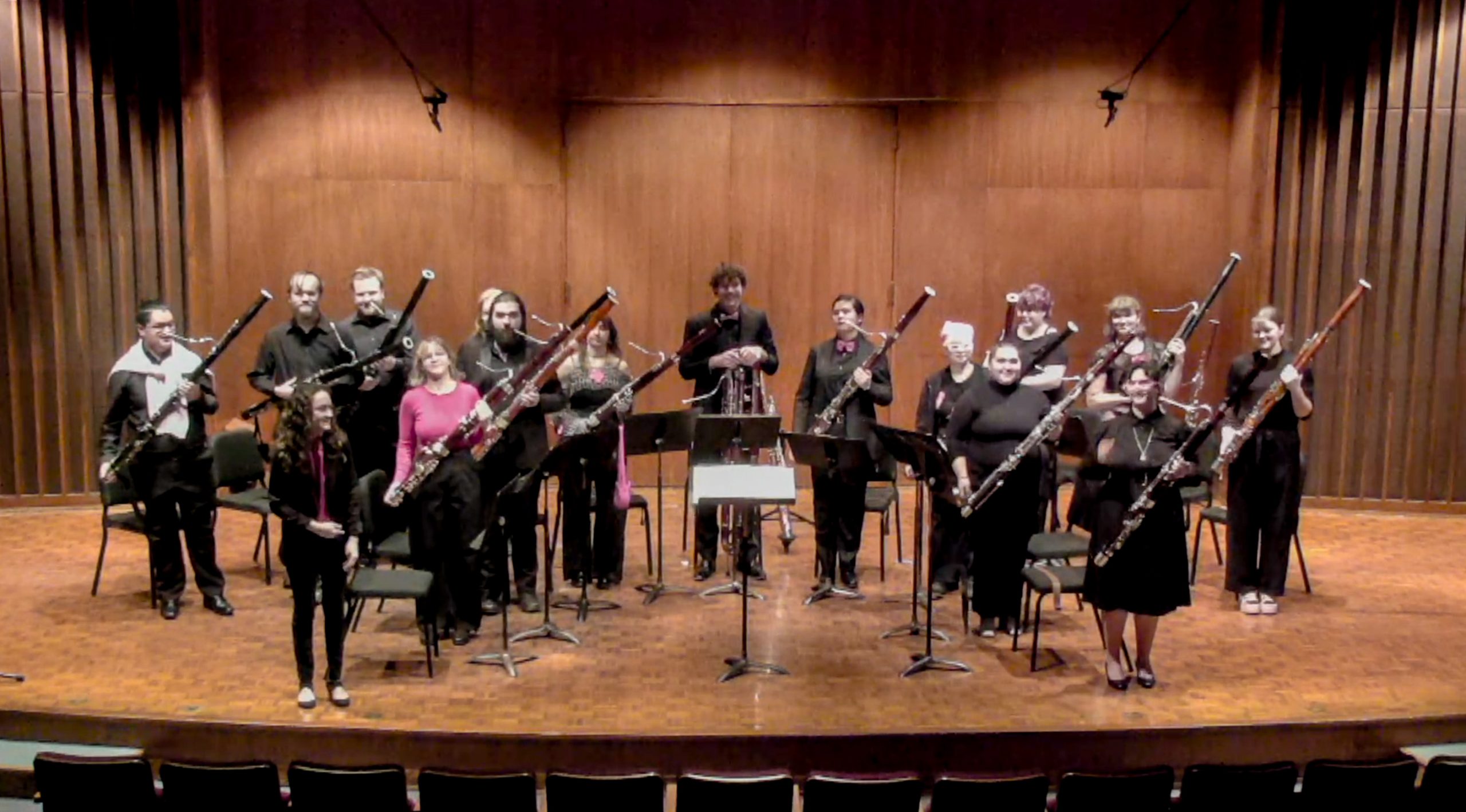Compared to other core woodwind instruments — the flute, oboe and clarinet — the bassoon is perhaps the least known. This past Feb. 25, the Viking Bassoon Ensemble (ViBE) took to the Harper Hall stage to prove its relevance. Led by recently hired Visiting Assistant Professor of Music Brigit Fitzgerald, the group showcased a variety of repertoire spanning three centuries.
To open, ViBE took on perhaps the most famous opening in Western classical music: the start of Richard Strauss’s “Also sprach Zarathustra.” Although the name might seem unfamiliar, the music has been a fixture of popular culture for decades.
Nearly 15 bassoonists played the Strauss excerpt, several of whom were a part of the Woodwind Techniques class. In other words, six of the bassoonists on stage had played the instrument for mere weeks.
Next was the famous Allegretto movement from Ludwig van Beethoven’s 7th Symphony. Originally for full orchestra, sophomore Kai Outzen — a member of ViBE — arranged the work for the nine bassoons.
“What I love about this arrangement is that it’s split into two choirs,” remarked Fitzgerald. This orchestration decision resulted in fascinating antiphonal sections, marking an extra layer of sound in the movement. Outzen conducted the work themself, with remarkably thoughtful phrasing and coordination.
After compositions for both 16 and nine players, the program changed format. Two separate student quartets were featured without a conductor.

Sophomore Colin Hutton, senior Matthew Springer, first-year Atlas Hollander and senior Nayla Brunnbauer featured first, with Florence Price’s “Silk Hat and Walking Cane” from her “Dance in the Canebrakes.” The gentle, singable piece was complimented by Hutton’s particularly lyrical melodies.
Senior Iris Hakes, Kai Outzen, senior Sarenna Sueoka and (on contrabassoon) junior Tara Maycroft were next, with “The Easy Winners” by Scott Joplin. The catchy ragtime work was effectively conceived by Hakes and Outzen, who doubled the melody with skillful tuning and cohesion.
In a dramatic departure from the earlier works, a piece from the living Danish composer, Carl Bergstrøm-Nielsen, was next.
As Fitzgerald explained, Bergstrøm-Nielsen’s music was written without conventional Western notation. Instead, the composer used a visual score, aiming to express musical ideas with abstract drawings.
“It kind of looks like a colorful swirl […] it looks like it was made with crayons,” said Fitzgerald. “You can imagine there’s a lot of ways to interpret the colorful swirl.”
To conclude their program, the nine bassoonists played an arrangement of music from the “Barbie” film, again with Fitzgerald conducting. Indeed, the “Barbie” theme permeated throughout, and the ensemble adorned pink features on their outfits.
Of the whole concert, ViBE seemed most committed to the “Barbie” suite. The arrangement, by Fitzgerald, was played with genuine enthusiasm, and smiles across the ensemble.

